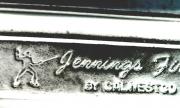Bill, thanks for advice.
As I am reading this thread over, I am coming to conclusion that there is no "single universal" way of training for various performance measurements, be it IDPA match, FAST, LAPD qual or RSS. Seems like dedicated training towards each specific parameter is needed.
The goal is to be a best all-around shooter I can be.
Let me turn it around a bit in regards to rate of progress and resource utilization. A potential relative "waste" of 230 rounds on weekly basis to me is insignificant comparing to a loss of 6 hours every Saturday - which is how long local USPSA matches last and why I shoot IDPA (3 hours match, once a month). Hence, static training and dry fire mostly. Note that being a static shooter, I still scored SS in my first classifier, even though I am unhappy.
Based on your responses and advice, you seem to have ability to train practically and shoot matches a lot more often than I can. What has your progress been in relative and absolute measures? What's your round and time expenditure?
I am not asking to figure out what shooter you are, Rob, I ultimately don't care about anybody's else performance but mine; I am simplytrying to find an optimal and realistic range/match/classes/dry fire ratio.





 Reply With Quote
Reply With Quote
